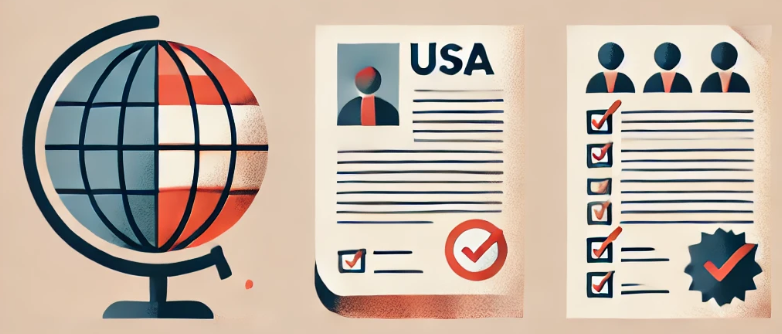- Remittance
- Exchange Rate
- Stock
- Events
- EasyCard
- More
- Download
Immigration to the United States: Methods, Requirements, and Costs
The United States, with its strong economy, educational resources, and diverse culture, attracts immigrants from all over the world. For those looking to establish a new life in the U.S., understanding the main pathways, specific conditions, and associated costs is essential. This article will detail the three main immigration methods: family-based immigration, employment-based immigration, and the Diversity Visa Lottery, along with the conditions and costs for each.

Family-Based Immigration
Family-based immigration allows individuals to immigrate to the U.S. through their familial relationships. The main categories include:
Spouse and Fiancé(e) Visas: U.S. citizens or lawful permanent residents can apply for immigration visas for their spouses or fiancé(e)s.
Immediate Relative Visas: U.S. citizens can apply for immigration visas for their parents and children (under 21).
Family Member Immigration: U.S. citizens or lawful permanent residents can apply for immigration visas for their adult children and siblings.
Visa Conditions:
Proof of Relationship: Documentation such as marriage certificates and birth certificates.
Financial Sponsorship: The sponsor must provide economic support to ensure the beneficiary does not become a public charge.
Background Check and Medical Examination: The beneficiary must pass a background check and medical examination to meet health and safety standards.
Immigration Costs:
Application and Visa Fees: Typically range from a few hundred to a thousand dollars.
Background Check and Medical Examination Fees: Generally between $200 and $500, depending on the specifics.
Legal Fees and Other Related Costs: Hiring an immigration lawyer can cost several thousand dollars.
Using professional remittance platforms like BiyaPay can help you manage these expenses. BiyaPay supports local remittances in most regions or countries worldwide, with same-day delivery and transaction fees as low as 0.5%, and supports large remittances. It is also very friendly to digital currency users, supporting real-time exchange of digital currencies (such as USDT) for major fiat currencies (such as USD and GBP).
Employment-Based Immigration
Employment-based immigration is based on the applicant’s job skills and employer sponsorship, divided into the following categories:
Employment Priority Categories (EB-1 to EB-5): Includes extraordinary talent, professionals, skilled workers, and investors.
H-1B Work Visa: For professionals employed by U.S. companies.
L-1 Intra-Company Transfers: For senior managers or employees with specialized skills transferred to U.S. branches of multinational companies.
Visa Conditions:
Job Offer and Employer Sponsorship: The applicant needs a job offer from a U.S. employer who must also sponsor the visa.
Educational and Work Experience Requirements: Applicants must meet specific educational and experience criteria depending on the category.
Labor Certification and PERM Process: Some employment categories require a labor certification to prove no suitable U.S. worker is available for the position.
Immigration Costs:
Labor Certification Fees: Includes advertising costs, legal fees, etc., typically several thousand dollars.
I-140 and I-485 Application Fees: I-140 fee is $700, and I-485 fee is $1,140 (excluding medical examination fees).
Work Visa Fees (H-1B, L-1): Includes application and legal fees, generally several thousand dollars.
Diversity Visa Lottery
The Diversity Visa Lottery (DV program) aims to increase the diversity of immigrants. It annually grants a limited number of visas to individuals from countries with low immigration rates to the U.S.
Visa Conditions:
Education or Work Experience: Applicants must have at least a high school education or two years of work experience.
Birth Country Eligibility: Applicants must be from a country with a low immigration rate to the U.S.
Diversity Visa Costs:
Lottery Registration Fee: Generally around $30.
Visa Application and Medical Examination Fees: Visa application fee is $330, and medical examination fees range from $200 to $500, depending on specifics.
Conclusion
There are various ways to immigrate to the United States, each with its specific conditions and costs. Whether through family relationships, employment skills, or the Diversity Visa Lottery, understanding the relevant requirements and expenses is crucial for a successful immigration process. Adequate preparation and planning can help applicants smoothly achieve their goal of immigrating to the United States.

























